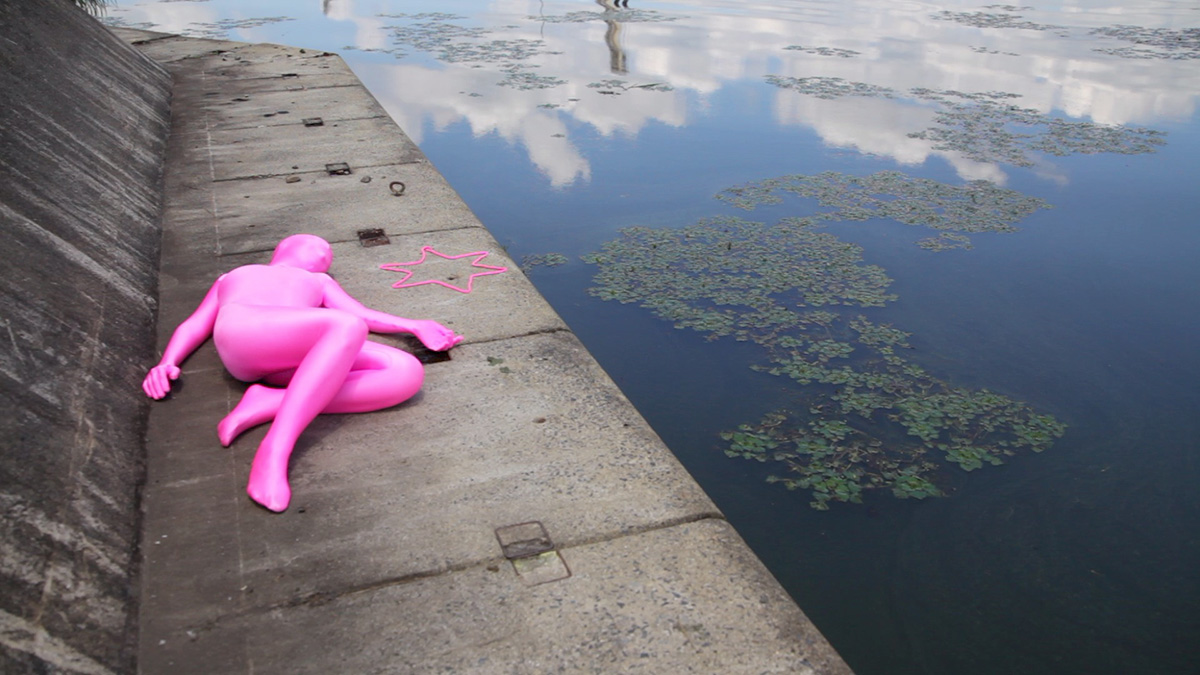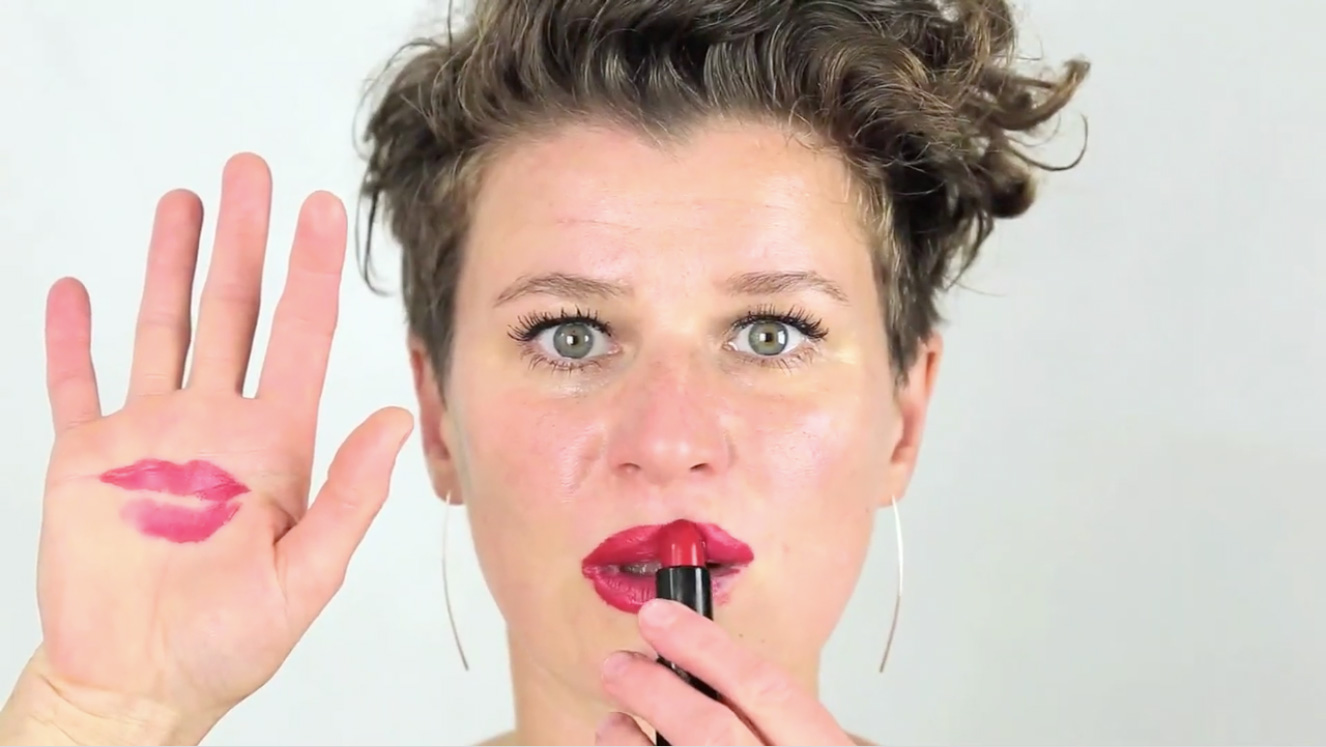Mapping Suwa in the digital : projections of land, the body and the spiritual through performance
寄稿文タイトル
Earlier this spring 2020, I had the unexpected pleasure of visiting Lake Suwa and its esteemed Grand Shrine in Nagano. This unique historic and cultural site provided fertile ground for imagining artistic responses for R3 ‘Scape-City’, the third iteration of the festival, Responding: International Performance Art Festival and Meeting. R3 ‘Scape-City’ presented online screenings of three performances: “Hexagram” by Yuzuru Maeda, “Seven Shades Red” by Evamaria Shaller and “you're just going to stand there and watch me burn?” by Ezzam Rahman. Suwa provides rich context for the performances to be read together as a triangulation of the relations between land, the corporeal, and metaphysical bodies.
The Grand Shrine of Suwa, or rather, the Grand Shrine complex, is made of four main shrines, accompanied by multiple smaller auxiliary shrines, that are laid out around the central lake, in surrounding municipalities and cities of Shimosuwa, Suwa and Chino. Regarded as one of the most ancient shrines in existence since the late 7th century, a rich and varied mythology has been woven through the centuries regarding its origins and belief systems - with its gendered structure of male and female kami (spirits) being represented in the Upper Shrine as the site of the male deity, while the goddess deity inhabit the Lower Shrine. Other gendered references abound too in the surrounding landscape, where the shrines do not have the usual honden (a building that houses the kami) but the male and female spirits are imbued in the environmental features such as the sacred mountain, rock, sugi tree, and yew tree. In addition, the local Onbashira Festival that takes place between April and May, is focused on the ritual replacement every seven years of the four wooden posts that stand on the four corners of the Grand Shrine. This practice is considered culturally significant, onerous and dangerous, usually undertaken by teams of local men, and involve the physical exertions of cutting down of immense fir trees, dragging them down the hill by hand, and re-erecting them as phallic boundary markers. However while these binary structures exist in its mythical foundations, the Suwa Grand Shrine is complicated by other religious narratives of shapeshifting, including heroes turning into serpents and dragons, as well as the notions of body substitutes in apprehending and differentiating the physical priestly and spiritual bodies.

Maeda’s “Hexagram” responded directly to this mythic site by creating a Zentai performance - a methodology she has been working with since 2009. Zentai involves the wearing of tight full-body lycra suits that cover the facial features of the wearer. By removing normative visual modes of identification, Zentai performance raises questions of individual subjectivity, sensorial deprivation and exploration, intimacy and anonymity. Dressed in a bright pink suit, Maeda’s figure cut an uncanny presence against the green spaces, blue skies and dimly lit alleys. To a soundtrack of increasingly discordant music, she mapped out her shamanistic imagining of Judaism onto various locations in Suwa - dragging a measuring line of yarn, placing six wooden posts, and beaconing a pulsing LED six-pointed star lamp. The performance endeds when a transubstantiation of sorts had occurred, and her figure lay spent by the lake, and the star had ‘returned to the sky’, mirrored in the lake’s still waters.
While Maeda’s Zentai body is ‘disappeared’ (chroma suits are used in animation to block out a body shape) in the invocation of a metaphysical presence, Shaller and Rahman’s performances returned the viewer to a visceral experience of the corporeal. Shaller’s actions were focused on her face and upper torso. Staring straight at the camera, she repeated the following actions: applying red lipstick to her lips, kissing her hand to leave pigment stains on her palm; slapping her face and chest to cause red welts to appear on her fair skin; tying her tongue with red yarn, enacting mastication motions, and pulling the yarn through her lips; tying rubber bands around her face and head to create bulges of swollen flesh, and snipping the bands so they flicked her skin. In executing these actions, Shaller demonstrated endurance in bearing pain and discomfort, while creating sexualised imagery of femininity with pink and red folds of flesh.

While Shaller’s performance offer close intimacy with the feminine upper body, Rahman’s performance focuse on the other bodily end - one foot, to be precise, that enter the frame when the performance began. Rahman’s practice has often utilised his body as medium, sometimes using skin to create sculptural forms of delicate abjection, while centering presence and bodily materiality in raising questions with regards to marginalised identities. With the camera positioned close-up to depict his hands utilising a needle and thread, Rahman slowly and deliberately embroidered letters to spell “MINORITY” on the sole of his foot. His appropriation of what is considered traditionally as ‘women’s craft’ queers his labour in locating the stitches on the sole and the heel, where the body is most vulnerable (in playful intimacy and for political torture), and where it is also the lowest placed, and to be trodden upon. The reference to Archille’s chink as well as the vernacular canine command, allude to the painful positioning of these ‘skin-deep’ incisions, that made visible the subjectivities of the otherwise negated and oppressed marginalised experiences. Perhaps, like how the Suwa Grand Shrine is itself composed of different beings, sites and structures, these three performances with differently contextualised artistic practices similarly enmesh together complex layers of intersected meaning in these bodily encounters of presence and spirituality.